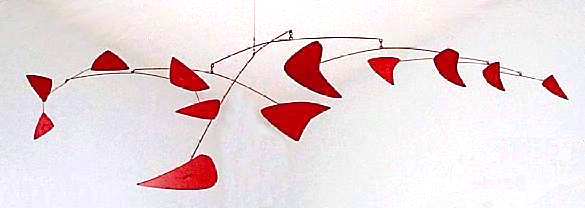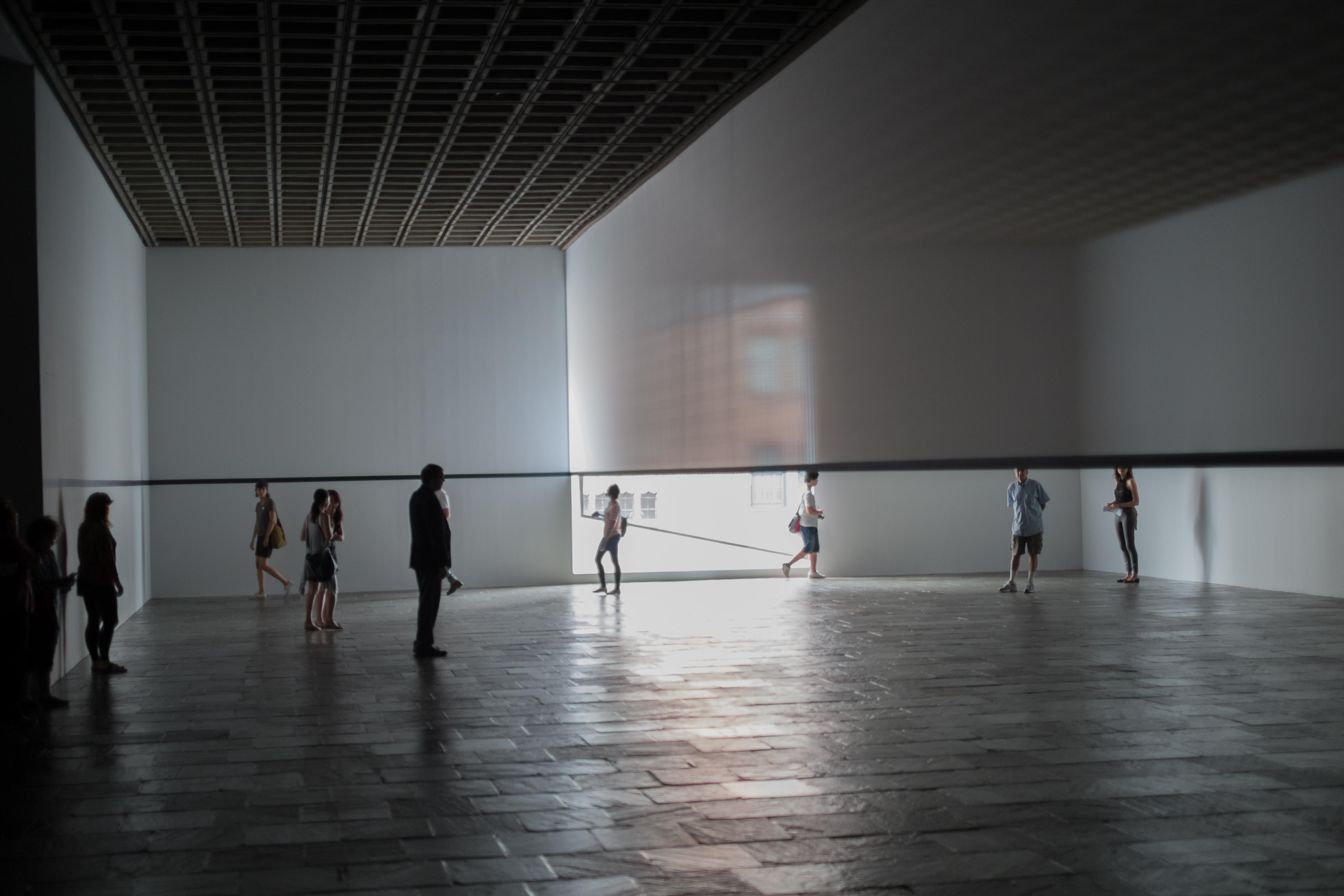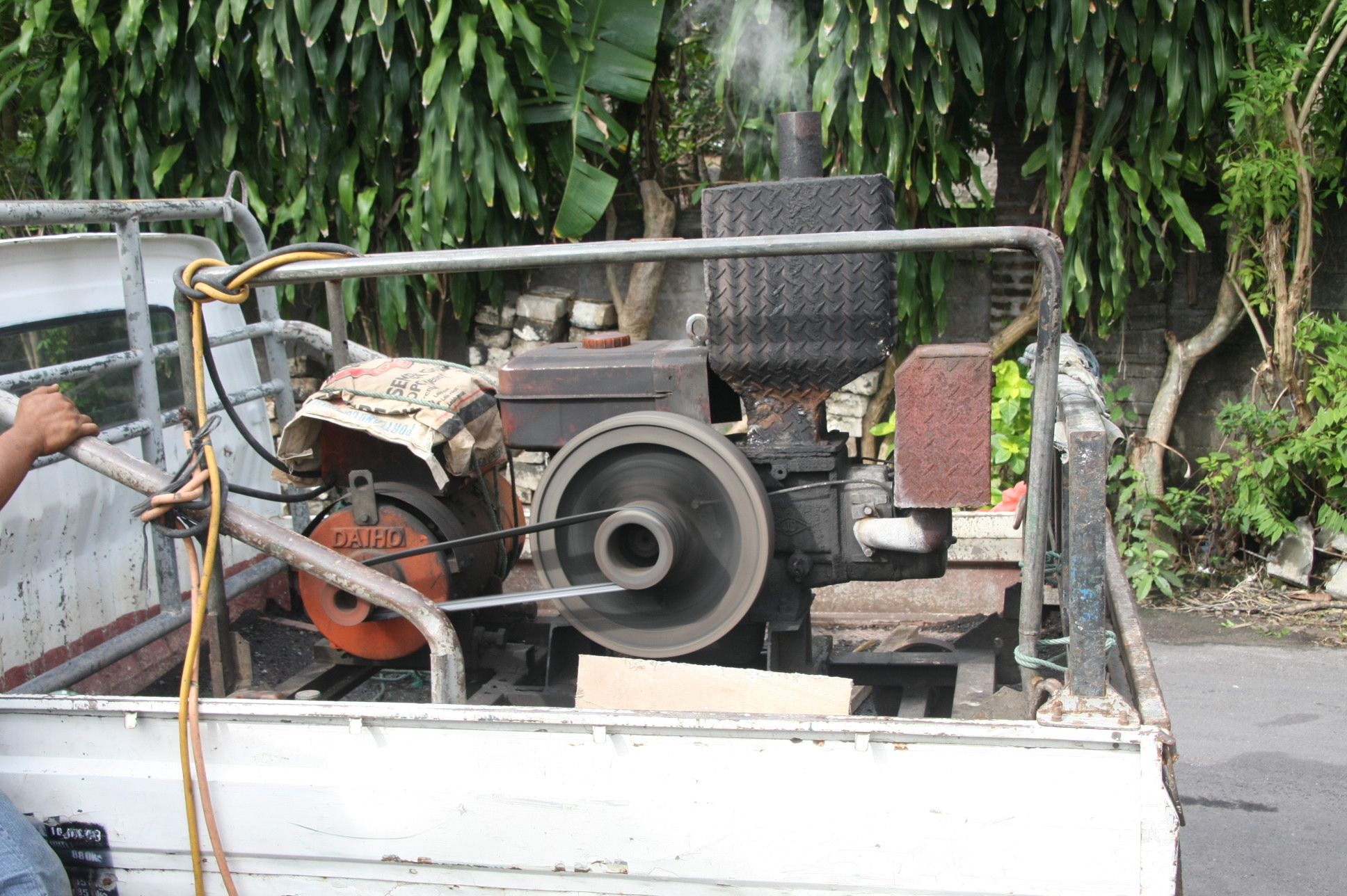|
Welded Sculpture
Welded sculpture (related to visual art and works of art) is an art form in which sculpture is made using welding techniques. History Welded sculptures have a relatively short history, dating back only to the 20th century. Before the development of current welding technology, sculptures made from metal were either cast or forged, and welding was primarily used in the construction industry. The first welded sculptures were credited to the Russian artist Vladimir Tatlin, who created his first piece of art in 1913. Tatlin was an important figure in the Russian Constructivist movement, which influenced the use of industrial materials in forms they had not yet been used in, mainly art. In the 1920s and 1930s, more artists followed this path and the experimenting and artistic work of metalworking came to light. Some of the earliest founders in this practice included Julio Gonzalez, and Alexander Calder. Gonzalez was credited and noticed for his welded sculptures that were not only ex ... [...More Info...] [...Related Items...] OR: [Wikipedia] [Google] [Baidu] |
Constantin Brâncuși
Constantin Brâncuși (; February 19, 1876 – March 16, 1957) was a Romanian sculptor, painter, and photographer who made his career in France. Considered one of the most influential sculptors of the 20th century and a pioneer of modernism, Brâncuși is called the patriarch of modern sculpture. As a child, he displayed an aptitude for carving wooden farm tools. Formal studies took him first to Bucharest, then to Munich, then to the École des Beaux-Arts in Paris from 1905 to 1907. His art emphasizes clean geometry, geometrical lines that balance forms inherent in his materials with the symbolism (arts), symbolic allusions of representational art. Brâncuși sought inspiration in non-European cultures as a source of Primitivism, primitive exoticism, as did Paul Gauguin, Pablo Picasso, André Derain, and others. However, other influences emerge from Romanian art, Romanian folk art traceable through Byzantine Empire, Byzantine and Dionysian traditions. Early years Brâncu� ... [...More Info...] [...Related Items...] OR: [Wikipedia] [Google] [Baidu] |
Bruce Gray (sculptor)
Bruce Gray (born November 14, 1956 Orange, New Jersey, died June 8, 2019 Los Angeles, California) was an artist residing in Los Angeles. His work includes kinetic art such as rolling ball machines, mobiles, stabiles, and suspended magnetic sculptures. He also creates found objects sculptures such as a lifesize motorcycle sculpture constructed from train parts, and giant objects such as a large aluminum wedge of Swiss cheese and giant high heel shoes. Gray's work has been displayed at many museums, art galleries, and is part of over 1200 corporate and private art collections. His work has appeared in numerous films and television shows including ''Charmed ''Charmed'' is an American fantasy drama television series created by Constance M. Burge and produced by Aaron Spelling and his production company Spelling Television, with Brad Kern serving as showrunner. The series was originally broadc ...'', ''Austin Powers (film series), Austin Powers'', ''Meet the Fockers'', ... [...More Info...] [...Related Items...] OR: [Wikipedia] [Google] [Baidu] |
Beverly Pepper
Beverly Pepper (née Stoll; December 20, 1922 – February 5, 2020) was an American sculptor known for her monumental works, site specific and land art. She remained independent from any particular art movement. She lived in Italy, primarily in Todi, since the 1950s. Early life and education Pepper was born Beverly Stoll on December 20, 1922, in Brooklyn, New York City. Her parents were Jewish immigrants, Beatrice (Hornstein) and Irwin Stoll. She grew up with a father who was a furrier, and sold carpet and linoleum, and a mother who was a volunteer for the National Association for the Advancement of Colored People (NAACP). "It was an interesting household," she said in an interview. "You see, I wasn’t brought up thinking I had to be a 'feminine’ woman.' Her mother and grandmother had strong personalities, which convinced her she could make her own life far from Brooklyn. "There was nothing I ever thought would limit me because my mother and grandmother were very strong wom ... [...More Info...] [...Related Items...] OR: [Wikipedia] [Google] [Baidu] |
Antoine Pevsner
Antoine Pevsner (12 April 1962) was a Russian-born sculptor and the older brother of Alexii Pevsner and Naum Gabo. As the originators of Constructivism and pioneers of kinetic art, the brothers are considered pioneers of twentieth-century sculpture. They made numerous prominent pieces, for instance Antoine's widely known sculpture ''The Flight of the Bird'', located at the General Motors Technical Center in Warren, Michigan. Biography Pevsner was born as Natan Borisovich Pevzner in Oryol, Russian Empire, into a Jewish family. Among the originators of and having coined the term, Constructivism, and pioneers of kinetic art, Pevsner and his brother Naum Gabo discovered a new use for metals and welding and made a new marriage of art and mathematics. Pevsner said: ''"Art must be inspiration controlled by mathematics. I have a need for peace, symphony, orchestration."'' He was one of the first to use the blowtorch in sculpture, welding copper rods onto sculptural forms. Along with ... [...More Info...] [...Related Items...] OR: [Wikipedia] [Google] [Baidu] |
Anthony Caro
Sir Anthony Alfred Caro (8 March 192423 October 2013) was an English abstract sculptor whose work is characterised by assemblages of metal using ' found' and industrial objects. He began as a member of the modernist school, having worked with Henry Moore early in his career. He was lauded as the greatest British sculptor of his generation. Early life and education Anthony Caro was born in New Malden, Surrey, England to a Jewish family and was the youngest of three children. When Caro was three, his father, a stockbroker, moved the family to a farm in Churt, Surrey. Caro was educated at Charterhouse School, where his housemaster introduced him to British sculptor Charles Wheeler. During holidays, he studied at the Farnham School of Art (now the University for the Creative Arts) and worked in Wheeler's studio When he left school he spent a brief period in an architect's office in Guildford drawing plans, which he did not take to, so his father suggested he study engineer ... [...More Info...] [...Related Items...] OR: [Wikipedia] [Google] [Baidu] |
Andrew French (sculptor)
Andrew Michael French is an English-born abstract sculptor. A one-time pupil of Peter Hide, French is best known for upright, large-scale welded sculptures made of brightly painted steel. With sculptors Mark Bellows, Bianca Khan, Rob Willms, and Ryan McCourt, Andrew French is identified as part of the "Next Generation" of Edmonton Sculpture.Terry Fenton, "Edmonton Sculpture: The Next Generation," Harcourt Expressed, Volume 12, Summer/Fall 2002 Educated at Newbury College (England), and Kent Institute of Art & Design with a BFA in Sculpture, French completed his Master of Fine Arts at the University of Alberta in 1999. French's 1999 sculpture "Pillar" is located on the University of Alberta campus, his sculpture "Still Life" is in the collection of the CIty of Edmonton, installed in Belgravia Art Park and his small soldered brass piece "The Abduction of St. Paul" is in the collection of the Alberta Foundation for the Arts. Andrew French is a co-founder of the North Edmonton S ... [...More Info...] [...Related Items...] OR: [Wikipedia] [Google] [Baidu] |
Alexander Calder
Alexander "Sandy" Calder (; July 22, 1898 – November 11, 1976) was an American sculptor known both for his innovative mobile (sculpture), mobiles (kinetic sculptures powered by motors or air currents) that embrace chance in their aesthetic, his static "stabiles", and his monumental public sculptures. Calder preferred not to analyze his work, saying, "Theories may be all very well for the artist himself, but they shouldn't be broadcast to other people." Early life Alexander "Sandy" Calder was born in 1898 in Lawnton, Pennsylvania. His birthdate remains a source of confusion. According to Calder's mother, Nanette (née Lederer), Calder was born on August 22, yet his birth certificate at Philadelphia City Hall, based on a hand-written ledger, stated July 22. When Calder's family learned of the birth certificate, they asserted with certainty that city officials had made a mistake. His mother was Jewish and of German descent and his father was Calvinist and of Scottish descent, but ... [...More Info...] [...Related Items...] OR: [Wikipedia] [Google] [Baidu] |
Aleš Veselý
Aleš Veselý (3 February 1935 – 14 December 2015) was a Czech sculptor, graphic artist, painter and academy teacher. Life Aleš Veselý was born on 3 February 1935 in Čáslav. He came from a mixed Jewish family of an insurance clerk and during World War II he lived with his parents in Hradec Králové. As a six-year-old boy, he had to wear Star of David, the yellow six-pointed star in public and this experience marked him for life. His father and sister were deported to the Theresienstadt Ghetto, Terezín Concentration Camp, but managed to escape before the end of the war and returned home. During the war, 47 of his relatives were murdered. Aleš Veselý, as a Jew, was not allowed to go to school and did not graduate from the fifth grade of primary school until after the war. His father got a new job in Ústí nad Labem, where Aleš Veselý started to study at the Gymnasium (school), gymnasium. After the education reform he finished the so-called Unified School of the Secon ... [...More Info...] [...Related Items...] OR: [Wikipedia] [Google] [Baidu] |
Richard Hunt (sculptor)
Richard Howard Hunt (September 12, 1935 – December 16, 2023) was an American artist and sculptor. In the second half of the 20th century, he became "the foremost African-American abstract sculptor and artist of public sculpture." A Chicago native, Hunt studied at the School of the Art Institute of Chicago in the 1950s. While there he received multiple prizes for his work. In 1971, he was the first African-American sculptor to have a retrospective at Museum of Modern Art. Hunt has created over 160 public sculpture commissions, more than any other sculptor in prominent locations in 24 states across the United States. With a career spanning seven decades, Hunt held over 170 solo exhibitions and is represented in more than 125 public museums across the world. His notable abstract, modern and contemporary sculpture and works on paper have appeared in museum and gallery exhibitions since the 1950s. Richard Hunt used “industrial materials and modern methods to sculpt organic forms ... [...More Info...] [...Related Items...] OR: [Wikipedia] [Google] [Baidu] |
Site-specific Art
Site-specific art is artwork created to exist in a certain place. Typically, the artist takes the location into account while planning and creating the artwork. Site-specific art is produced both by commercial artists, and independently, and can include some instances of work such as sculpture, stencil graffiti, rock balancing, and other art forms. Installations can be in urban areas, remote natural settings, or underwater. History The term "site-specific art" was promoted and refined by Californian artist Robert Irwin but it was actually first used in the mid-1970s by young sculptors, such as Patricia Johanson, Dennis Oppenheim, and Athena Tacha, who had started executing public commissions for large urban sites. For ''Two Jumps for Dead Dog Creek'' (1970), Oppenheim attempted a series of standing jumps at a selected site in Idaho, where "the width of the creek became a specific goal to which I geared a bodily activity," with his two successful jumps being "dictated by a l ... [...More Info...] [...Related Items...] OR: [Wikipedia] [Google] [Baidu] |
Arc Welding
Arc welding is a welding process that is used to join metal to metal by using electricity to create enough heat to melt metal, and the melted metals, when cool, result in a joining of the metals. It is a type of welding that uses a welding power supply to create an electric arc between a metal stick ("electrode") and the base material to melt the metals at the point of contact. Arc welding power supplies can deliver either Direct current, direct (DC) or Alternating current, alternating (AC) current to the work, while consumable or non-consumable electrodes are used. The welding area is usually protected by some type of shielding gas (e.g. an inert gas), vapor, or slag. Arc welding processes may be manual, semi-automatic, or fully automated. First developed in the late part of the 19th century, arc welding became commercially important in shipbuilding during the Second World War. Today it remains an important process for the fabrication of steel structures and vehicles. Power supp ... [...More Info...] [...Related Items...] OR: [Wikipedia] [Google] [Baidu] |








